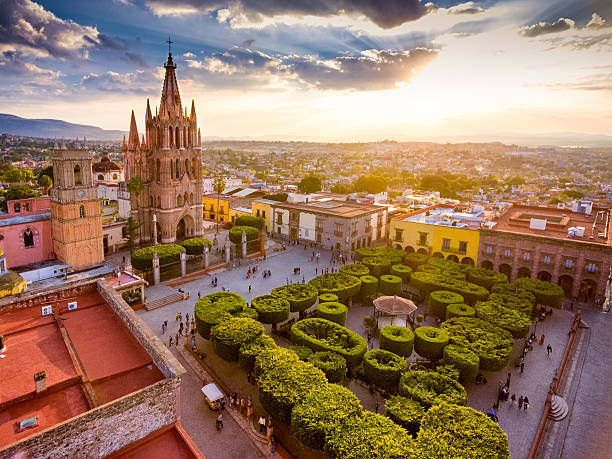Florence by Floodlight
- Sean Conway

- Jul 31, 2020
- 4 min read
We arrived in Florence midday from Venice, our hotel right in the heart of the city, Plaza del Duomo, in the shadow of the iconic Duomo, the first domed cathedral in the world. The taxi driver maneuvered the jam-packed square, somehow dodging the flood of pedestrians. We collected our bags and paid, the sun baking down on us, heat rising off the stonework below, the square blocking any small breeze from finding its way in. We were in a stone oven.
After dropping our bags and sitting on the bed for a short while to catch our collective breath and will our bodies to stop sweating, my wife and I put a day pack together and I slung it on my shoulder: guide book, camera, and plenty of water, and headed out to discover the city.
We followed the self-guided walking tour in my guide book and stopped to appreciate what the book told us to stop to appreciate. Sweat trapped between my spine and backpack. My hat was making me even hotter, as the heat exhausting off the top of my bald head had nowhere to go. The crowds were thick, a wall of body heat and unpleasant odors.
We pushed through the self-guided tour and our depleted energy and depleting focus, and then retreated to our hotel to escape the crowds and knee-buckling sun.
Later, I splashed water on my face and we picked a restaurant based on the recommendation of one of my study-abroad students in Spain. We were too weary to be enthusiastic but we were hungry, and, having only one night in Florence, we reminded each other to try to enjoy the few hours we’d had left, and that the next day we’d be looking at the Mediterranean Sea from our apartment in a small village in the Cinque Terre, a strategic respite between the big cities of Florence and Rome.
But then a funny thing happened. Our meal, not surprisingly, was incredible—the best of the entire trip. But, more surprisingly, as the sun slipped low and then away, the crowds also slipped away. The air cooled. By the time we’d come out of the restaurant, the night felt pleasant and my body, refueled and replenished, rebounded. The oppressive heat and claustrophobia evaporated, and the night, and the city, was ours. We strolled at a leisurely pace, Christine’s arm hooked through mine, along quiet streets that emptied into surprising squares of wonder and history. Floodlights lit upon ageless statues and busts—Perseus with the head of Medusa, Michelangelo’s David, the statue of Leonardo da Vinci. Above, the stars brightened to life like a custom-ordered special effect. We unlocked our arms long enough for gelato, then wandered some more with our cones, falling in love with Florence and this gelato and each other. But mostly Florence.
* * *
We’ve never been on a cruise and the beautiful night in Florence reminded me of why we’d avoided them. I’ve been to my share of cities and islands with harbors pocked by cruise ships, narrow, cobblestoned European streets flooded with cruisers, clogging the arteries of the city. We’d just left Venice, literally infested with overtourism, so many cruisers hitting the streets but not adding much in the way of tourism euros through hotels and restaurants. After Florence we stayed in the tiny town of Vernazza in Italy’s Cinque Terre, “Five Lands,” small villages clustered along the rugged coast of the Mediterranean, a string of no-car towns connected by train or—more popular—by stunning hikes. On our arrival, mid-afternoon by train, we found the narrow main street littered with cruise ship guests, shoulder-to-shoulder, a sea of body heat and summer sweat. It was difficult to even see the village we’d arrived in as we treaded the sea of bodies.
But, after five p.m., our bags unpacked and our bodies rested, we left our apartment to find the late afternoon wide open and cool, as though the high tide had treated, revealing spaces we could not have seen before. We found the same thing in the tiny town of Fläm, Norway, on a day trip along the mighty fjords—a massive, hulking cruise ship docked alongside this scarce, simple village, dwarfing it really, dominating the landscape like some invasive species. It looked so out of place I couldn’t stop glancing at it in the background.
Rick Steves encourages us to spend more time in these smaller villages, places that most tourists descend upon for day trips, places like Hallstatt, Austria, so quaint and cute nestled in the green hills of Austria and hugging Lake Chiemsee. We visited as a day trip, by bus, and while pretty, we found it difficult to appreciate among the thousands of other day-trippers who’d flooded off the dozens and dozens of tour buses. Rick Steves tells us to instead stay in these “day-trip” towns, to see them in the quiet evenings after the buses and cruise ships have departed. It’s a lesson learned the hard way.
So I strolled the streets of Florence under the late-night moon, and I tried to imagine what my impressions of the city would have been had I been rounded up onto a tour bus, or shuttled back to my cruise ship, at five in the afternoon. What would I have thought of Venice or the Cinque Terre? How should these cities and towns and—especially—villages, be experienced?
I don’t know if I’ll ever try a cruise, but I'm not in a hurry to climb aboard. I’ve been enough places in the oppressive heat and suppressive crowds to know better: that a winding, cobblestoned village street, under the late stars and lamplight, passing the occasional group of friends drinking and laughing, or perhaps a couple kissing against a shadowed stone wall, the night theirs—and ours—man, that’s magical.



Comments